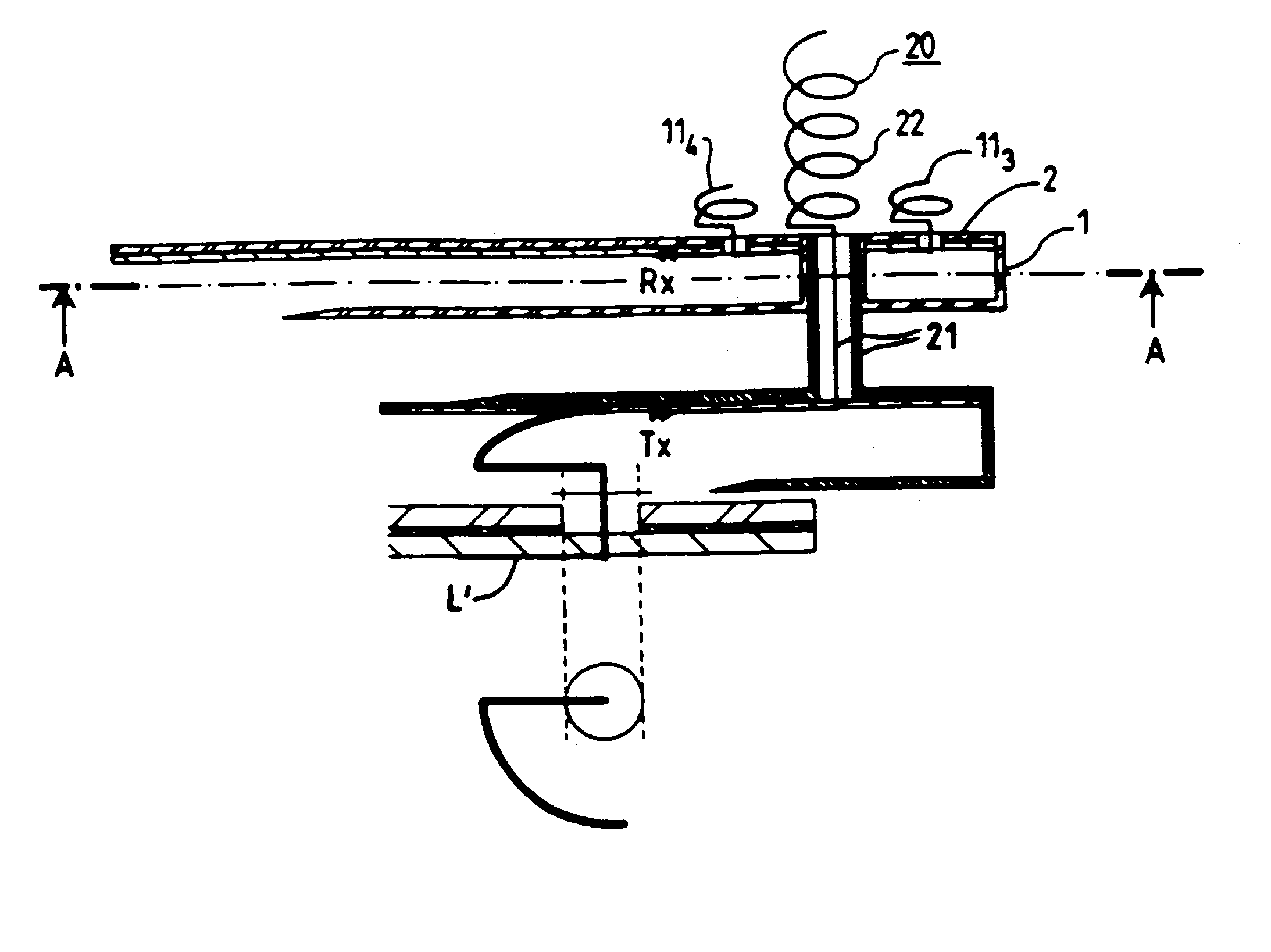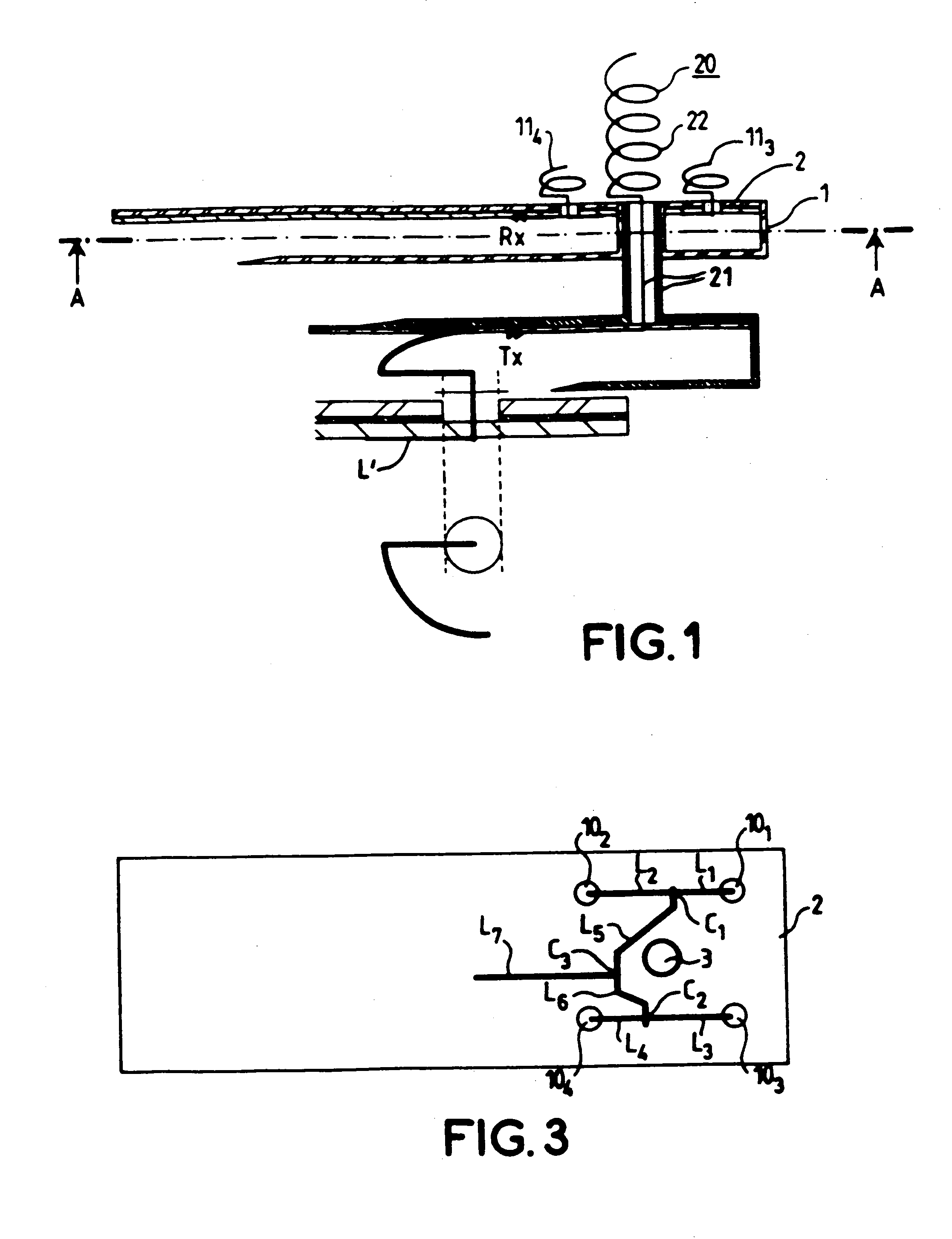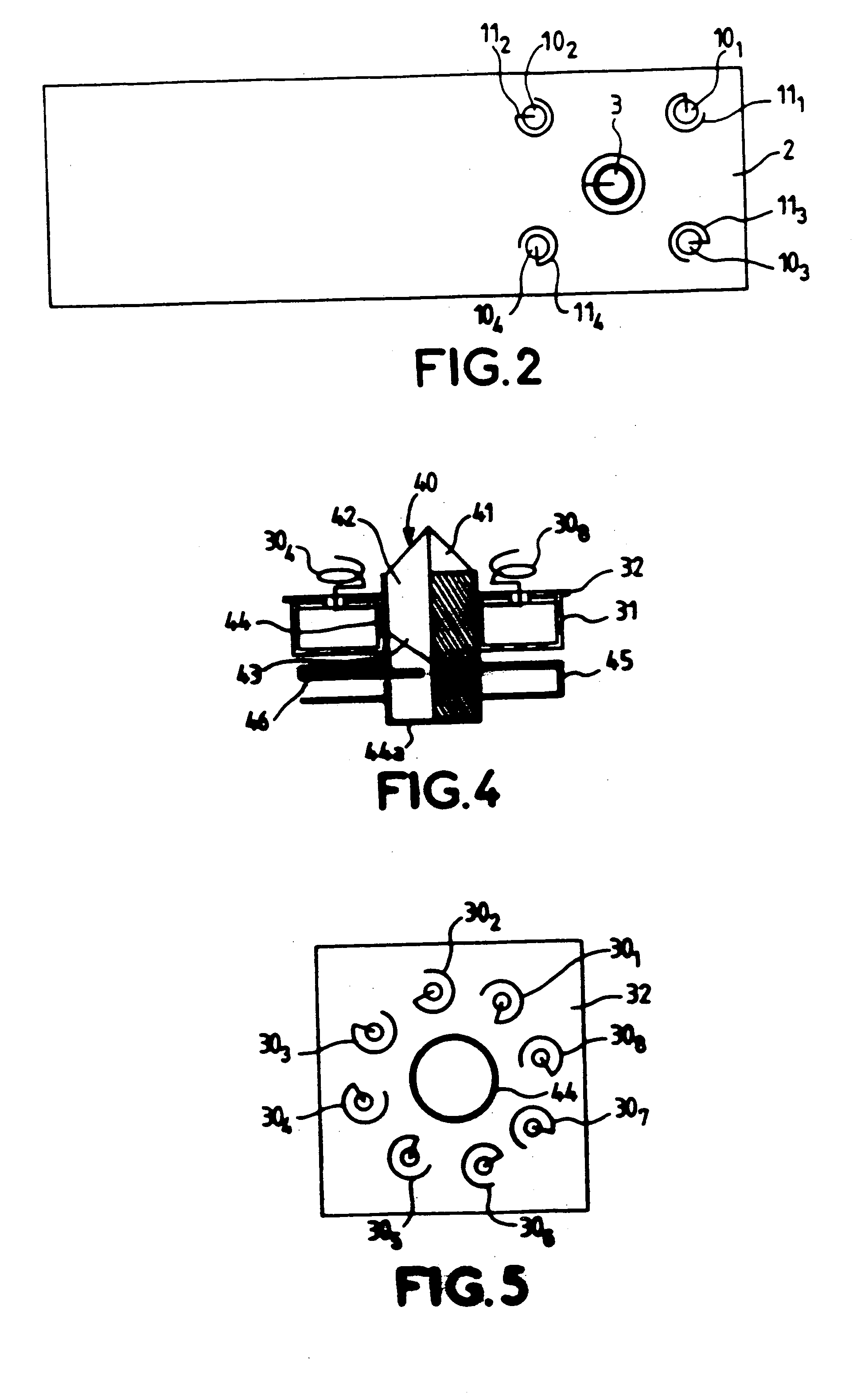To source-antennas for transmitting/receiving electromagnetic waves
a sourceantenna and electromagnetic wave technology, applied in the direction of individual energised antenna arrays, polarised antenna unit combinations, non-resonant long antennas, etc., can solve the problems of unoptimized selection of antenna arrays for reception sources, unfavorable individual use, and unwieldy implementation technology, etc., to simplify the topology of the feed array, reduce the loss of arrays, and reduce the loss
- Summary
- Abstract
- Description
- Claims
- Application Information
AI Technical Summary
Benefits of technology
Problems solved by technology
Method used
Image
Examples
Embodiment Construction
[0028] As represented more particularly in FIGS. 1 and 4, the source-antenna is a mixed source comprising a first array of n radiating elements operating in a first frequency band more particularly in reception and a longitudinal-radiation antenna operating in a second frequency band, i.e. in transmission.
[0029] As represented in FIG. 1, the first array of n radiating elements consists of a support 1 of parallelepipedal shape, covered on its upper face with a substrate 2 made of dielectric materials.
[0030] As represented clearly in FIG. 2, the support 1 comprises four circular holes 101, 102, 103, 104, which, in the embodiment represented, are positioned at the four vertices of a square. These four holes allow the passage of four radiating elements consisting of helices 111, 112, 113, 114. Provided at the middle of the square is a circular aperture 3 allowing the passage of a fastening stem which forms part of the support element of the longitudinal-radiation antenna which will be...
PUM
 Login to View More
Login to View More Abstract
Description
Claims
Application Information
 Login to View More
Login to View More - R&D
- Intellectual Property
- Life Sciences
- Materials
- Tech Scout
- Unparalleled Data Quality
- Higher Quality Content
- 60% Fewer Hallucinations
Browse by: Latest US Patents, China's latest patents, Technical Efficacy Thesaurus, Application Domain, Technology Topic, Popular Technical Reports.
© 2025 PatSnap. All rights reserved.Legal|Privacy policy|Modern Slavery Act Transparency Statement|Sitemap|About US| Contact US: help@patsnap.com



